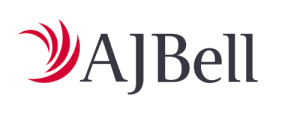Global markets delivered strong gains in September as equities advanced following the US Federal Reserve’s first rate cut of the year and continued easing of trade tensions. However, uncertainties emerged with the US Administration’s announcement of 100% tariffs on branded and patented pharmaceuticals effective 1 October. Gold continued to show strong momentum over the month, with prices reaching new record highs. The precious metal surged 11.9% in September alone, bringing year-to-date gains to 47.0%.
Regional equity markets posted broad-based gains, with emerging markets (6.8%) leading global performance. Within emerging markets, China (9.7%) gained notably as Beijing’s stimulus measures and AI optimism kept Chinese equities buoyant. The US (4.1%) gained over the month, supported by easing monetary policy, despite Federal Reserve Chair Jerome Powell noting that “equity prices are fairly highly valued.” Japanese equities (2.8%) continued their recent strength, posting a sixth consecutive monthly gain in local-currency terms. Sentiment was buoyed by the US-Japan trade deal which reduced tariffs on Japanese exports from 25% to 15%. European markets (2.5%) posted more modest performance, with the eurozone economy demonstrating resilience as German PMI data showed expansion. UK markets (1.9%) also advanced, though the economy continues to face headwinds as businesses prepare for anticipated tax increases in Chancellor Rachel Reeves’ November budget.
The macroeconomic environment remained mixed with central bank policy showing continued divergence. The Federal Reserve delivered its first rate cut of 2025 in September, reducing the policy rate by 25 basis points to take the target rate to 4.00-4.25%. This was anticipated in response to prospective labour market softness, with August’s payrolls showing a modest 22,000 gain and the unemployment rate rising to 4.3%. The Fed signalled further accommodation to come, with median projections indicating a further 50 basis points of easing through year-end. In contrast, the European Central Bank maintained its deposit rate at 2.0%, adopting a more cautious stance amid conflicting economic signals across the eurozone. The Bank of England similarly held rates unchanged, reflecting the UK’s mixed economic picture where growth has shown resilience against a backdrop of subdued consumer and business sentiment, whilst inflation has continued to be persistent.
The overweight position in Applied Materials (+27.8%), a supplier of equipment, services and software for manufacturing semiconductors was the top contributor to relative returns in the Trust. The stock rose following an announcement that Nvidia would invest $5 billion into chipmaker Intel, with Applied Materials being a significant supplier to Intel. The underweight position in Amazon (-3.8%) was also a positive contributor to performance. Amazon’s cloud-computing business has come under increasing pressure from rivals, including Google and Microsoft. The underweight position in Tesla (+33.7%) detracted from performance. Tesla’s third quarter sales are expected to recover due to a pull forward in demand from the expiring $7,500 US federal tax credit for electric vehicles.
We ended the month at a discount of 8.0%, slightly wider than the 7.9% level in August. Net gearing continued to be conservative at 4.1% (with debt at fair value) for month-end.
As at 30 September 2025










